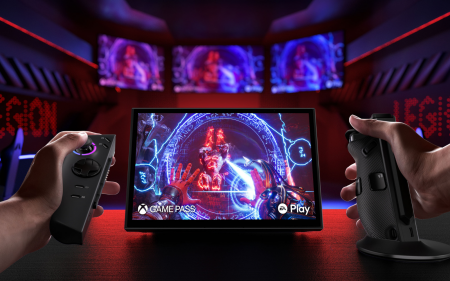How do you touch something that doesn’t exist? That’s a question Reddit-bound anime fans have asked for years, but it’s also a serious consideration for folks developing hologram technology. Minority Report might be a privacy nightmare scenario but the touch interface Tom Cruise uses in the film is undeniably cool. Wouldn’t it be awesome if it were real?
Well, it’s not. But FlexiVol, a hologram manipulation method created by researchers at Universidad Pública de Navarra (the Public University of Navarra in Spain), comes close. There are a few caveats at this point. The technology has only just been presented in a paper, but it seems to work. It’s also hardware-based rather than the hand-waving Tony Stark is fond of doing when designing stuff like the Model 63.
Reality is a hologram
Instead of wiggling fingers at empty air, the FlexiVol human-computer interface lets users touch and even feel holograms, the latter to a limited extent. It uses a system of elastic diffuser bands that act in a similar manner to your average touchscreen, letting the interface perform touch registration in terms of depth as well as along a flat plane.
It’s not as straightforward as it looks. FlexiVol’s researchers explain that “[w]e correct the distortions of the volumetric graphics projected on elastic oscillating diffusers and propose a design space for FlexiVol, enabling various gestures and actions through direct interaction techniques.”
In simpler language, these special bands move up and down at high speed, with different materials at different heights. These can tell where a person’s finger is in the predefined square the hologram is projected in, letting the system calculate how to swipe or rotate the virtual 3D figure.
“Displays such as screens and mobile devices are present in our lives for working, learning, or entertainment. Having three-dimensional graphics that can be directly manipulated has applications in education — for instance, visualising and assembling the parts of an engine,” said the researchers.
Various applications are being considered for the fledgling technology, including collaborative interaction with virtual objects. This includes industrial and entertainment options. The tech will be shown off at the Conference on Human Factors in Computing Systems in Yokohama, Japan, which runs from 26 April to 1 May this year.




